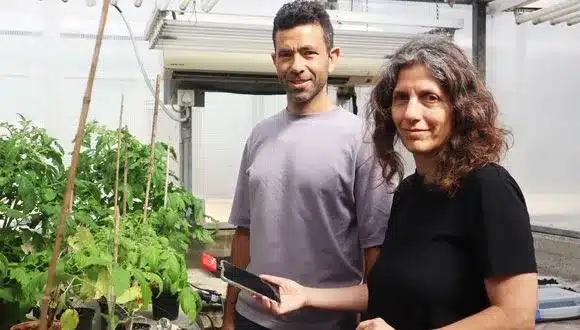Do you ever talk to your plants? It turns out they might be “talking” too — especially when they’re stressed (like when you forget to water them). For the first time, researchers at Tel Aviv University have recorded and analyzed distinct sounds emitted by plants. These click-like noises, similar to the sound of popcorn popping, occur at volumes comparable to human speech — but at high frequencies beyond the range of human hearing.
“We found that plants usually emit sounds when they are under stress, and that each plant and each type of stress is associated with a specific identifiable sound,” said the researchers in a press release. “While imperceptible to the human ear, the sounds emitted by plants can probably be heard by various animals, such as bats, mice, and insects.”
Resolving a Longstanding Scientific Debate
The groundbreaking study was led by Prof. Lilach Hadany from the School of Plant Sciences and Food Security at Tel Aviv University, in collaboration with Prof. Yossi Yovel — Head of the Sagol School of Neuroscience, faculty member at the School of Zoology and the Steinhardt Museum of Natural History, and recipient of the Kadar Family Award for Outstanding Research. Research students Itzhak Khait and Ohad Lewin-Epstein also played key roles, working alongside colleagues from the Raymond and Beverly Sackler School of Mathematical Sciences, the Institute for Cereal Crops Research, and the Sagol School of Neuroscience. The findings were published in the prestigious journal Cell.
“From previous studies we know that vibrometers attached to plants record vibrations,” says Prof. Hadany. “But do these vibrations also become airborne soundwaves – sounds that can be recorded from a distance? Our study addressed this question, which researchers have been debating for many years.”
In the first phase of the study, researchers placed plants inside an acoustic box located in a quiet, isolated basement to eliminate background noise. Ultrasonic microphones — capable of capturing frequencies between 20 and 250 kilohertz (well above the human hearing limit of around 16 kilohertz) — were positioned about 10 centimeters from each plant. The main focus was on tomato and tobacco plants, though recordings were also made from wheat, corn, cactus, and henbit.
Mapping Plants’ Complaints with AI
Before placing the plants in the acoustic box, the researchers exposed them to different conditions: some had gone without water for five days, others had their stems cut, and some were left completely untouched. According to Prof. Hadany, the goal was to determine whether plants emit sounds — and if those sounds change depending on the plant’s condition.

“Our recordings indicated that the plants in our experiment emitted sounds at frequencies of 40-80 kilohertz. Unstressed plants emitted less than one sound per hour, on average, while the stressed plants – both dehydrated and injured – emitted dozens of sounds every hour.”
The recorded plant sounds were analyzed using custom-built machine learning algorithms. These AI tools learned to differentiate between plant species and types of sounds, eventually becoming capable of identifying the plant and assessing its type and level of stress based solely on the audio. Remarkably, the algorithms could still detect and classify plant sounds even in a noisy greenhouse environment.
In greenhouse trials, researchers monitored plants undergoing gradual dehydration. They observed that the number of sounds increased as the stress built, peaking at a certain point before declining.
“In this study we resolved a very old scientific controversy: we proved that plants do emit sounds!” says Prof. Hadany. “Our findings suggest that the world around us is full of plant sounds, and that these sounds contain information – for example about water scarcity or injury. We assume that in nature the sounds emitted by plants are detected by creatures nearby, such as bats, rodents, various insects, and possibly also other plants – that can hear the high frequencies and derive relevant information. We believe that humans can also utilize this information, given the right tools – such as sensors that tell growers when plants need watering. Apparently, an idyllic field of flowers can be a rather noisy place. It’s just that we can’t hear the sounds.”
